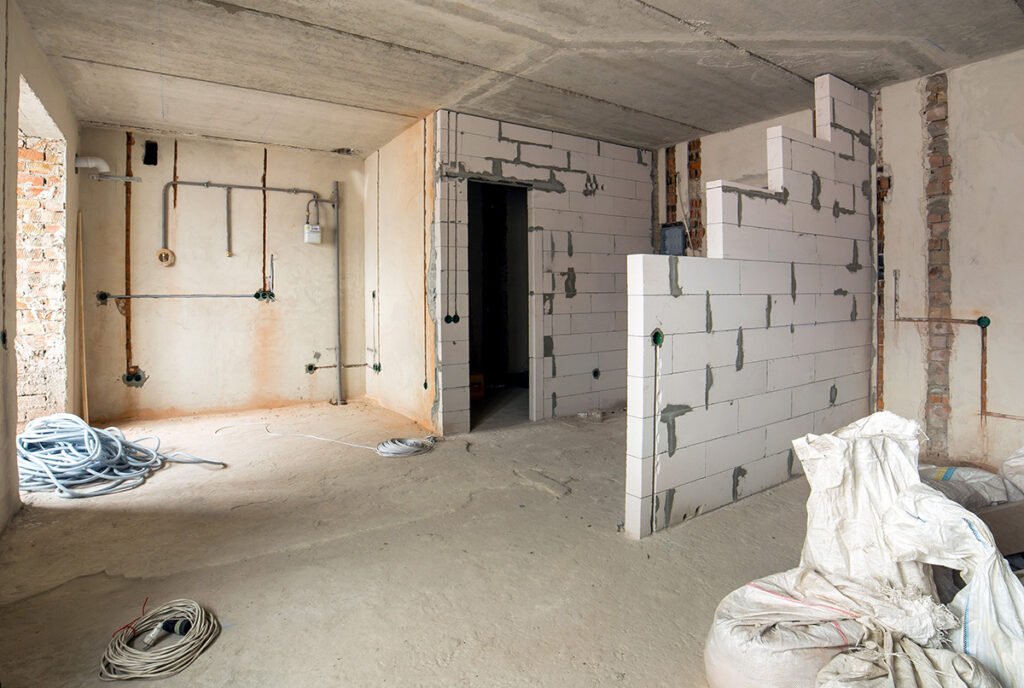Thinking of giving your home a much-needed upgrade? Maybe knocking down that old popcorn ceiling, replacing flooring, or opening up a wall? Imagining your ideal space becoming a reality is truly thrilling. But before you break out the sledgehammer, there’s something critical you should consider—asbestos. This concealed danger might be present in your home, particularly if it was constructed prior to the 1980s. Renovating without first checking for asbestos can not only delay your project but also put your health and safety at serious risk.
Whether you’re a seasoned DIYer or hiring a professional crew, understanding asbestos and its risks can save you time, money, and long-term health concerns. Let’s break it all down so you can renovate with confidence—and peace of mind.
What Is Asbestos and Why Should I Care?
Asbestos is a naturally occurring mineral once praised for its fire resistance, durability, and insulating properties.It was frequently found in materials used for building homes—such as ceiling tiles, insulation, siding, and vinyl flooring.
Here’s the problem: when asbestos is disturbed, it releases tiny fibers into the air that can be easily breathed in. Once inhaled, these microscopic particles can get trapped in the lungs and, over time, lead to severe health issues like mesothelioma, lung cancer, and asbestosis.
That’s why asbestos inspection is essential before diving into any home renovation. You can’t see or smell asbestos, so only professional asbestos testing can confirm whether it’s present.
Renovation Risks: How Disturbing Asbestos Endangers Your Health
Most homeowners don’t plan to expose themselves to toxic materials, but that’s exactly what can happen if you renovate without proper precautions. Tearing down walls, sanding floors, or drilling into ceilings can release asbestos fibers into the air.
If you unknowingly disturb asbestos-containing materials, you risk:
- Breathing in dangerous airborne fibers
- Contaminating your HVAC system
- Exposing your family and pets
- Delaying your renovation project
Even minor projects can stir up asbestos if it’s present. That’s why a licensed asbestos abatement professional should always evaluate older homes before renovations begin.
The Importance of Asbestos Inspection and Testing
You wouldn’t skip a home inspection before buying a house, so why skip an asbestos inspection before remodeling one?
Hiring certified professionals to conduct asbestos testing ensures that any suspicious materials in your home are sampled safely. Labs then analyze these samples to determine if asbestos is present and in what concentration.
Here’s what to expect from a proper inspection:
- A walkthrough of your home to identify potential asbestos-containing materials
- Collection of small material samples (with minimal disturbance)
- A detailed lab report outlining where asbestos exists and how much
Once you have the results, you’ll know whether asbestos remediation is needed, or if your project is in the clear to proceed.
What Happens During Asbestos Abatement?

If your inspection comes back positive, don’t panic—but don’t go it alone, either. This is where licensed asbestos abatement professionals step in.
Asbestos abatement is the safe removal, encapsulation, or containment of asbestos materials. It’s not something you can do with a regular dust mask or by “just being careful.” Abatement involves:
- Setting up sealed work areas.
- Using HEPA filtration and negative air pressure systems.
- Wearing protective equipment.
- Safely removing and disposing of hazardous materials.
DIY removal isn’t just dangerous—it’s often illegal. Plus, failing to hire certified professionals can result in fines and future liability if you sell your home.
When Do You Need Asbestos Removal?
The need for asbestos remediation depends on a few key factors:
- Age of Your Home: Built before 1985? There’s a good chance asbestos is present.
- Scope of Renovation: Anything involving walls, ceilings, or floors could disturb asbestos.
- Current Condition: Damaged or crumbling materials pose a higher risk.
- Testing Results: Professional testing is your most reliable guide.
Even if asbestos is found, removal might not be necessary if the material is intact and not likely to be disturbed. Encapsulation (sealing it in place) may be a safer and more affordable option in some cases.
Planning Ahead: Steps for a Safe Renovation
Here’s a step-by-step breakdown to keep your renovation both safe and compliant:
- Pause Your Project Plans: Don’t begin work until you’ve had an inspection.
- Book an Asbestos Inspection: Especially critical for homes built before the 1990s.
- Review Testing Results: Know exactly where asbestos is and in what form.
- Consult a Licensed Abatement Contractor: Don’t risk going with the cheapest bidder—go with experience.
- Follow Safe Removal Procedures: If needed, asbestos will be removed or encapsulated properly.
- Proceed with Your Renovation: Now that it’s safe, your dream remodel can move forward!
Legal Considerations and Regulations
Asbestos laws vary by state, but in Texas, property owners and contractors are required to follow strict protocols when asbestos is involved. The Texas Department of State Health Services (DSHS) outlines specific licensing requirements and safety procedures.
If you ignore these rules, you could be looking at:
- Steep fines
- Work stoppages
- Potential lawsuits
- Liability when selling your home
Professional asbestos remediation ensures your renovation is not only safe, but also legal.
Choosing the Right Asbestos Abatement Partner
It’s not just about removal—it’s about trust. Look for an asbestos contractor that is:
- Licensed and insured
- Experienced in residential work
- Transparent with pricing and timelines
- Highly reviewed by other homeowners
Empire Environmental Group LLC, based in Dallas, TX, offers comprehensive asbestos removal, inspection, and remediation services. We work closely with homeowners to keep their renovation timelines on track while protecting their health.
Renovating Your Home? Don’t Skip This Critical Step!
Before you paint, patch, or pull down that old ceiling, make sure your home is asbestos-free. By investing in proper asbestos inspection and, if needed, asbestos abatement, you’re protecting your health and your home’s future.
It’s easy to overlook the risks when you’re excited about your remodel—but trust us, it’s worth the peace of mind.
Conclusion
In conclusion, asbestos removal before renovating your home is essential for protecting your health and ensuring legal compliance. Disturbing asbestos-containing materials can release dangerous fibers into the air, increasing the risk of serious respiratory illnesses. A professional asbestos inspection and, if necessary, safe removal by certified experts should be your first step before any renovation begins. This not only safeguards you and your family but also helps avoid costly delays or legal issues. Don’t take chances—if your home was built before the 1980s or you’re unsure about asbestos, consult a professional before starting your renovation project. Your safety depends on it.
FAQs
Q: How do I know if my home has asbestos?
A: You can’t tell by looking. Only professional asbestos testing can confirm its presence.
Q: Can I remove asbestos myself to save money?
A: Not. DIY removal is dangerous and often illegal without proper training and equipment.
Q: Is asbestos still used in homes today?
A: While it’s banned in many products, asbestos can still be found in older homes. Some materials may even contain small amounts in newer constructions.
Q: What’s the difference between asbestos abatement and remediation?
A: They’re often used interchangeably, but abatement refers to removal, while remediation includes both removal and containment methods.
Q: How long does asbestos removal take?
A: It depends on the project size. Most residential projects take a few days to complete safely.

